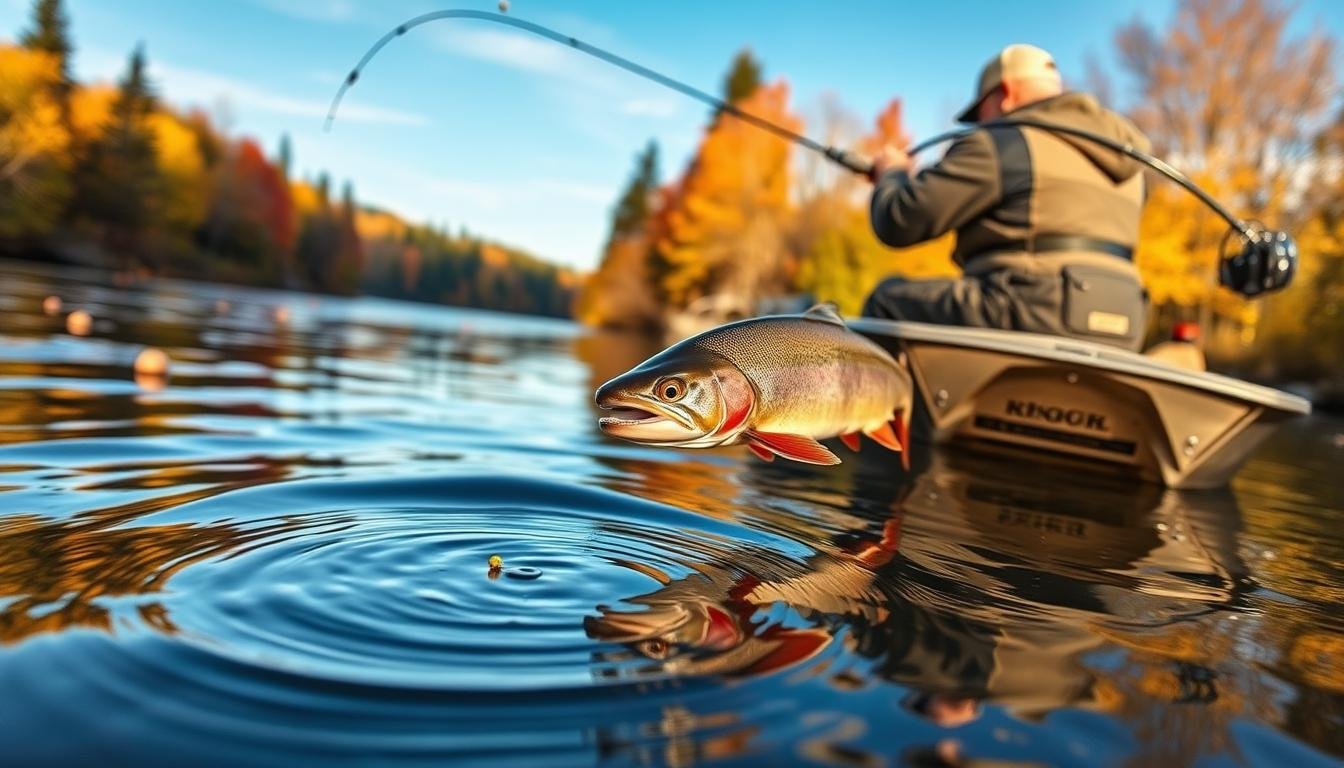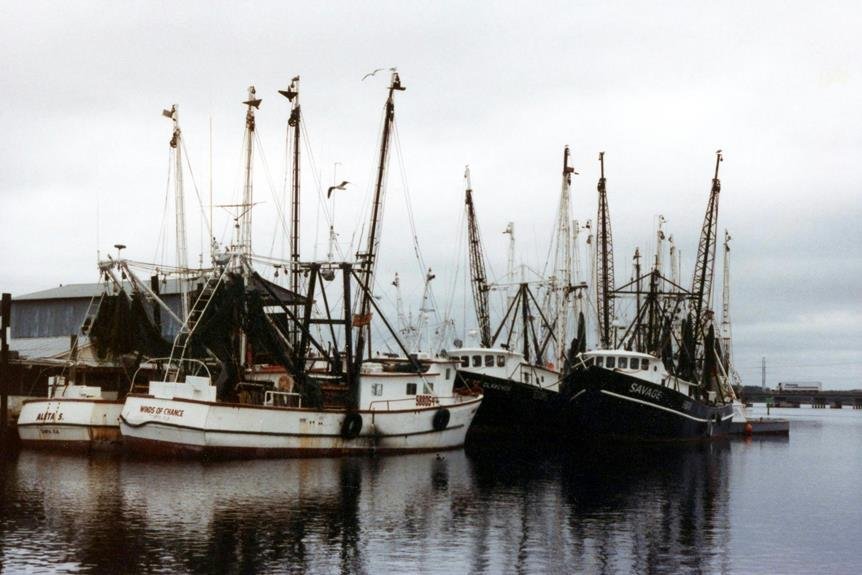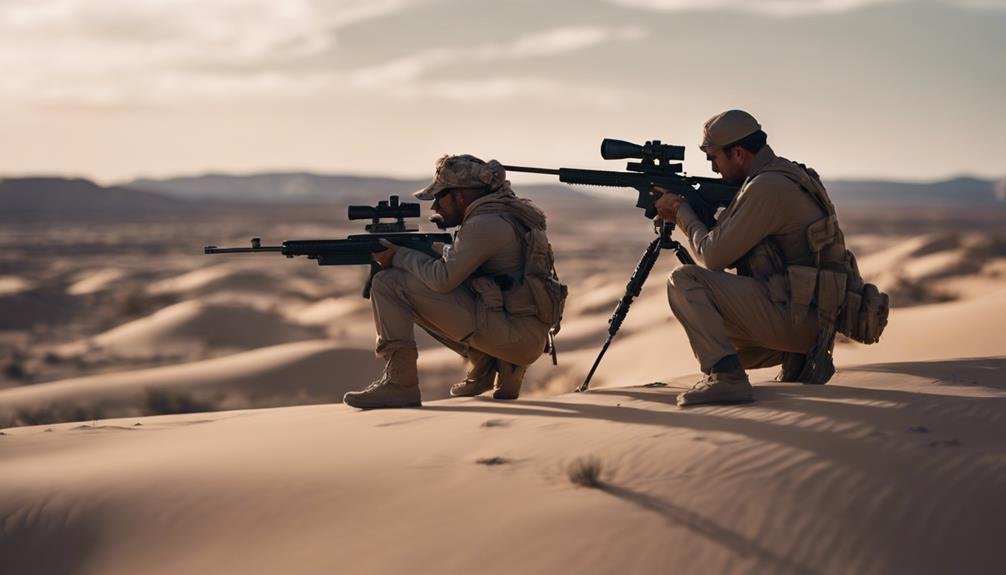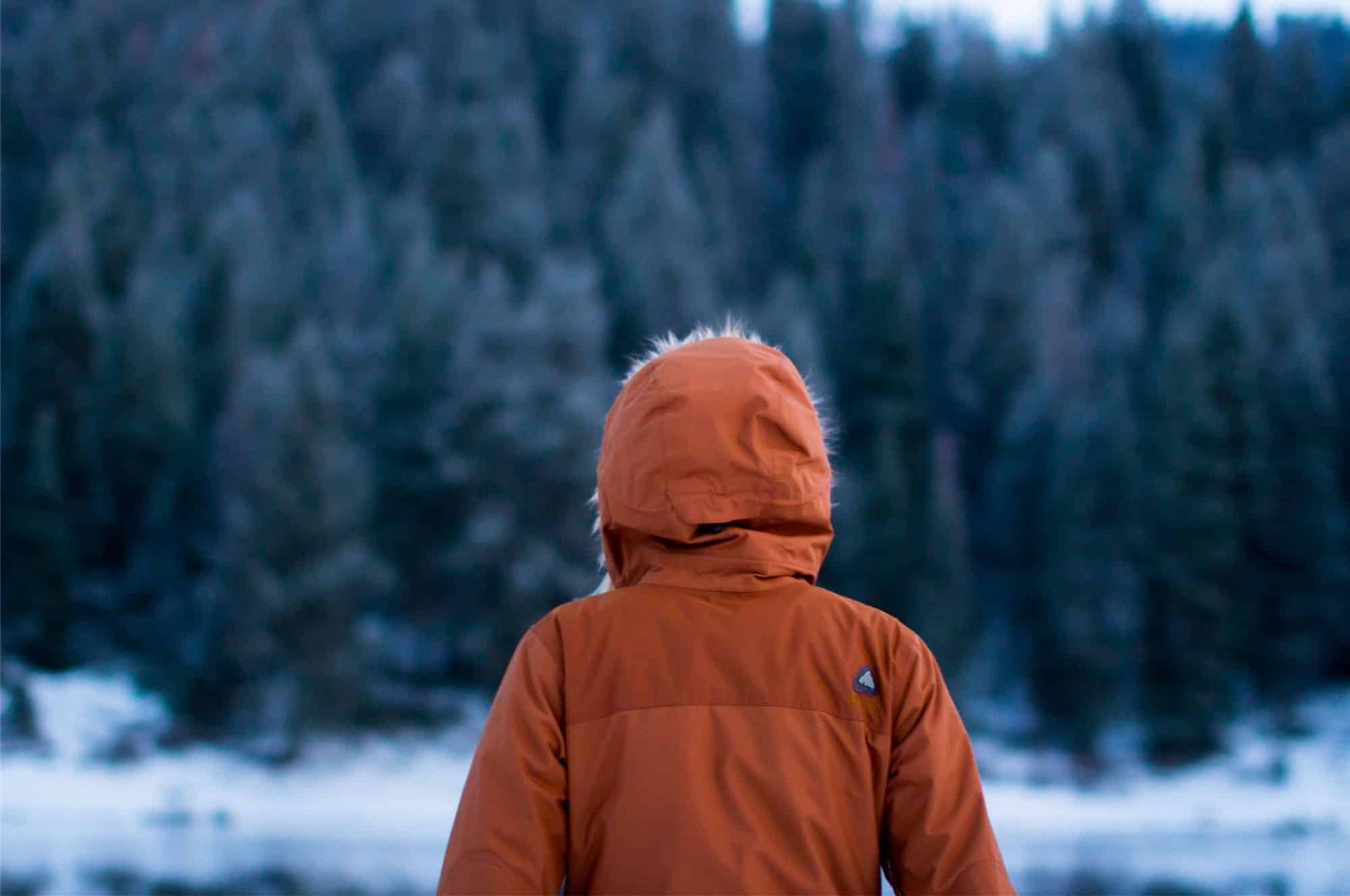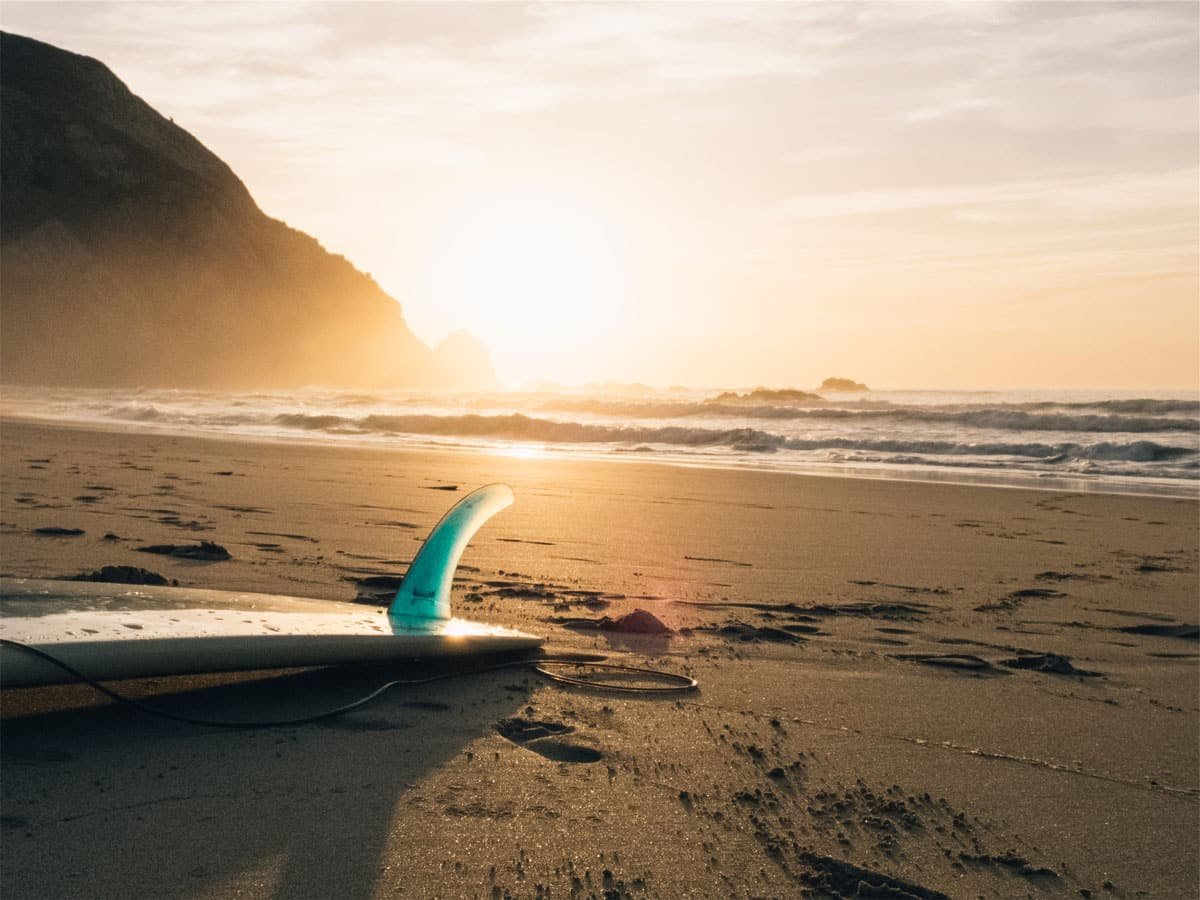Did you know Oregon’s rivers stretch over 1,500 miles? They’re a paradise for steelhead fishing fans. Fishing is a big part of Oregon’s culture. Learning about steelhead jigging can make your fishing trips better.
Whether you’re an experienced angler or just starting, this guide will help you. You’ll learn effective fishing techniques for river fishing. Get ready to improve your skills!
In this article, you’ll get important tips on steelhead behavior, the right gear, and fishing techniques. You’ll also learn about sustainable fishing. With these insights, you’ll be on your way to becoming a successful steelhead angler. Are you ready to learn the secrets of jig fishing? Let’s explore more!
Key Takeaways
- Oregon’s rivers provide diverse environments for steelhead fishing.
- Understanding steelhead behavior is crucial for successful fishing.
- Choosing the right gear enhances your chances on the water.
- Implementing effective fishing techniques can improve catch rates.
- Practicing sustainable fishing supports healthy ecosystems.
- Awareness of local regulations ensures responsible fishing practices.
Understanding Steelhead Behavior
To catch more steelhead in rivers, knowing their behavior is key. They follow certain migration patterns and react to water conditions. By understanding these, you can improve your fishing.
Migration Patterns of Steelhead
Steelhead migrate at specific times, mainly in late winter and spring. This is when they move upstream. Knowing these times helps you plan your fishing trips better. Also, watching water temperature can give you clues about their movement.
Influence of Water Conditions on Steelhead
Steelhead behavior changes with water conditions. They like clear, cold water. It’s important to keep an eye on water levels and temperature. This helps you know when to change your fishing tactics.
| Water Condition | Impact on Steelhead Behavior |
|---|---|
| Clear Water | Increases feeding activity |
| Cold Temperatures | Encourages upstream migration |
| Rising Water Levels | May lead to decreased feeding |
| High Flow | Shifts feeding areas downriver |
Essential Gear for Steelhead Jigging
Choosing the right gear is key to catching a big steelhead. The best rods, reels, and lines can make a big difference. Let’s look at what you need for successful steelhead jigging.
Best Rods for Steelhead Jigging
Look for rods between 8 to 10 feet long, with medium to medium-heavy action. These rods help you control the jig better. Brands like St. Croix and G. Loomis make great rods for this.
These rods are strong enough for steelhead but still feel every bite. They’re designed to handle steelhead’s power and agility.
Choosing the Right Reel and Line
A good spinning reel is essential for steelhead jigging. Choose one that’s both durable and high-quality. It will help you win the intense battles steelhead put up.
Use a 10 to 20-pound test braided line. It’s low visibility to attract fish and strong enough for steelhead’s runs. Super-lines are also a good choice for jigging. They float better and have less stretch, helping you feel every bite.
The right rods, reels, and lines will improve your steelhead jigging. They make a big difference in your success.
Choosing the Best Steelhead Jigs
Choosing the right jigs is key to catching steelhead. Knowing the best jig colors and weights helps you fish better in rivers.
Popular Jig Colors and Patterns
For steelhead fishing, you have many jig colors to choose from. Some top picks include:
- Black
- White
- Pink
- Chartreuse
- Olive
Each color works well under different light and water conditions. The Nightmare Jig, with its white head and red chenille, is a favorite for catching steelhead.
Marabou and paddle tail jigs are also great. They attract not just steelhead but also trout and salmon. They’re essential for any fisher.
Weight Considerations for Various Depths
Knowing the right jig weight is crucial for fishing at different depths. Jig sizes range from 1/64 oz to 1 oz, depending on the fishing conditions.
- 1/64 oz to 1/32 oz: Ideal for float fishing
- 1/8 oz to 1 oz: Suitable for casting and jigging in deeper waters
Lighter jigs work well in shallow waters, while heavier ones reach deeper and move better in strong currents. The right weight keeps your jig in the strike zone longer, boosting your catch chances.
| Jig Color | Conditions |
|---|---|
| Black | Low Light, Deep Water |
| White | Bright Conditions |
| Pink | Variable Conditions |
| Chartreuse | Cloudy Water |
| Olive | Natural Settings |
Using the right jig colors and weights makes your fishing better. Twitching and moving the rod tip can make your jig more appealing to steelhead. This combination leads to a great fishing experience.
Steelhead Jigging Techniques
Learning different steelhead jigging techniques can really boost your fishing success. Twitching and bottom bouncing are two key methods to try. They can make a big difference in catching steelhead. Let’s dive into these strategies to improve your fishing game.
Twitching Techniques for Steelhead
Twitching mimics the movement of baitfish, which can attract steelhead. Quick rod jerks create lifelike twitches. This is great for shallow waters where steelhead are active.
Using vibrant jigs like cerise/black or cerise/white makes twitching even more appealing. Keep your rod tip high and adjust your retrieve speed. This will help you find the best rhythm for the day.
Bottom Bouncing Techniques
Bottom bouncing involves dragging the jig along the riverbed. It’s perfect for targeting fish near the sediment. This method works well in rivers with different depths.
Choose a jig weight that keeps good contact with the bottom without getting stuck. Make sure your rod is sensitive to catch light bites. Using jigs from brands like Hawken Aero Jig or Yakima Bait Maxi Jig can improve your bottom bouncing.
Finding the Perfect Strike Zone
Finding the right spot to fish for steelhead is key. Knowing the current and depth helps you find the best places. This knowledge makes your jigging more effective, boosting your chances of catching these fish.
Understanding Current and Depth
Steelhead like to hide in spots where the current slows down, like eddies or deep holes. These places offer them shelter and a chance to catch prey. By understanding the current and depth, you can pick the right jig weight.
For example, jigs weighing 1/3- to 1-ounce are good for depths up to 40-50 feet. But for deeper spots, use heavier jigs, like 6-ounce or 8-ounce. The weight of the jig affects how fast it sinks, so choose wisely.
Adjusting to Visibility Conditions
How clear the water is affects your jig choice. In clear water, use lighter, natural-colored jigs. But in murky water, go for brighter colors to grab steelhead’s attention.
The right jigging and color can really help your fishing. Mimic a wounded baitfish with your jig’s movements to trigger steelhead’s hunting instinct. Adjusting to the water’s conditions is crucial for success.
Effective Drift and Float Fishing in Rivers
Learning effective fishing techniques is key for catching river steelhead. Using drift fishing and float fishing can boost your success. Each method has its own benefits and suits different situations and tastes.
Using Floats to Enhance Jigging
Floats, or bobbers, are crucial for showing jigs at the right depth. They keep the jig in the strike zone longer, raising your chances of catching steelhead. Adjust the float’s depth based on the river’s conditions.
For example, setting it a bit above the bottom can lead to more bites. Anglers often use jigs like Marabou and Flashbou. These can be paired with maggots or shrimp for better results.
Drifting Techniques for Steelhead Success
About 85% of anglers prefer drift fishing for winter steelhead. It needs a good grasp of the current. This method lets the jig move naturally with the water, like steelhead prey.
Find spots where steelhead are known to pass. Making the jig and float farther apart covers more water. This increases your chances of catching a fish. Adjusting your drift fishing based on water clarity and conditions is crucial.
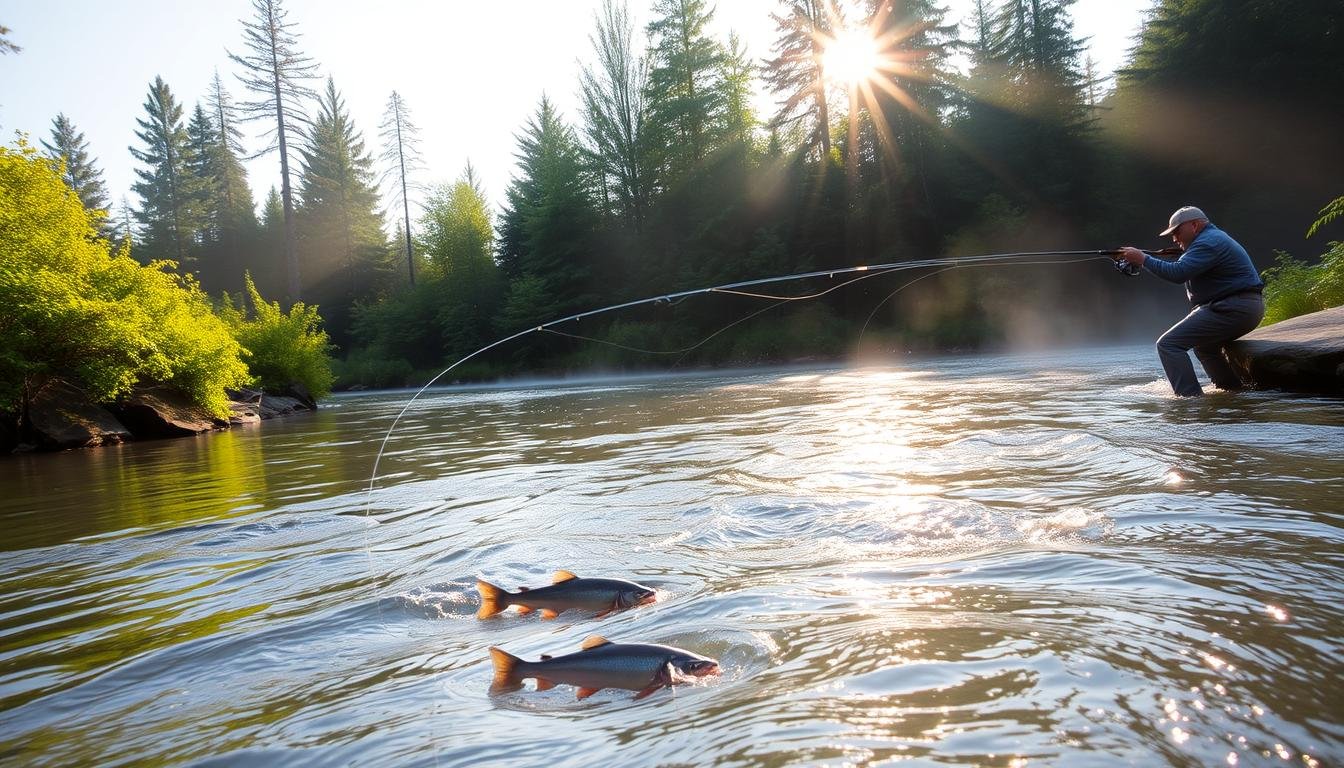
Utilizing Bait and Lures with Jigs
Using bait and lures with jigs can really boost your steelhead fishing success. Knowing the right combinations and when to use them can make a big difference. Here’s how to use steelhead bait and lures to your advantage.
Best Baits for Steelhead Jigging
The right bait can take your fishing to the next level. Some top picks include:
- Live bait like wax worms
- Small minnows
- Pieces of shrimp
Using these baits on your jigs can attract steelhead by mimicking their natural food. You can mix and match different baits with jigs to match different fishing conditions.
Combining Lures with Jigs for Success
Trying out different lures can lead to great jig combinations that steelhead can’t resist. For example:
- Marabou jigs, like the Hawken Aero Jig, move well in the water.
- Plastic worms, such as Mad River Worms, add versatility and look good.
- Glow-in-the-dark jigs and large glow beads make a bright contrast, especially in cloudy water.
By mixing these elements, you might find the perfect combo for certain water conditions. Remember to adjust the weight and presentation to look natural, especially in strong currents.
Environmental Factors Affecting Steelhead Fishing
Understanding environmental factors can greatly enhance your steelhead fishing experience. Weather and seasonal influences play a big role in steelhead behavior. It’s key to adapt your strategies to these changes to improve your chances of success.
Weather and Seasonal Influences
Weather conditions affect steelhead feeding habits and migration patterns. Changes in temperature, precipitation, and barometric pressure can change steelhead behavior. For example, ideal fishing days often have mild weather and stable conditions.
In the spring, streams are clear enough to see 8-12 inches underwater. Anglers can use jigs with maggots, spawn bags, or spinners for better results. Fall is also a prime time for steelhead fishing, with dropping water temperatures and reduced daylight stimulating feeding activity.
How to Adapt to Fishing Conditions
Flexibility is key for steelhead fishing. Adjusting your techniques, bait choices, and fishing times based on weather changes can lead to better catches. In winter, spawn bags or jigs with maggots work well, especially in streams with good visibility.
Understanding seasonal adaptations can also make a big difference. For example, different steelhead strains in Lake Erie offer unique opportunities that vary by season.
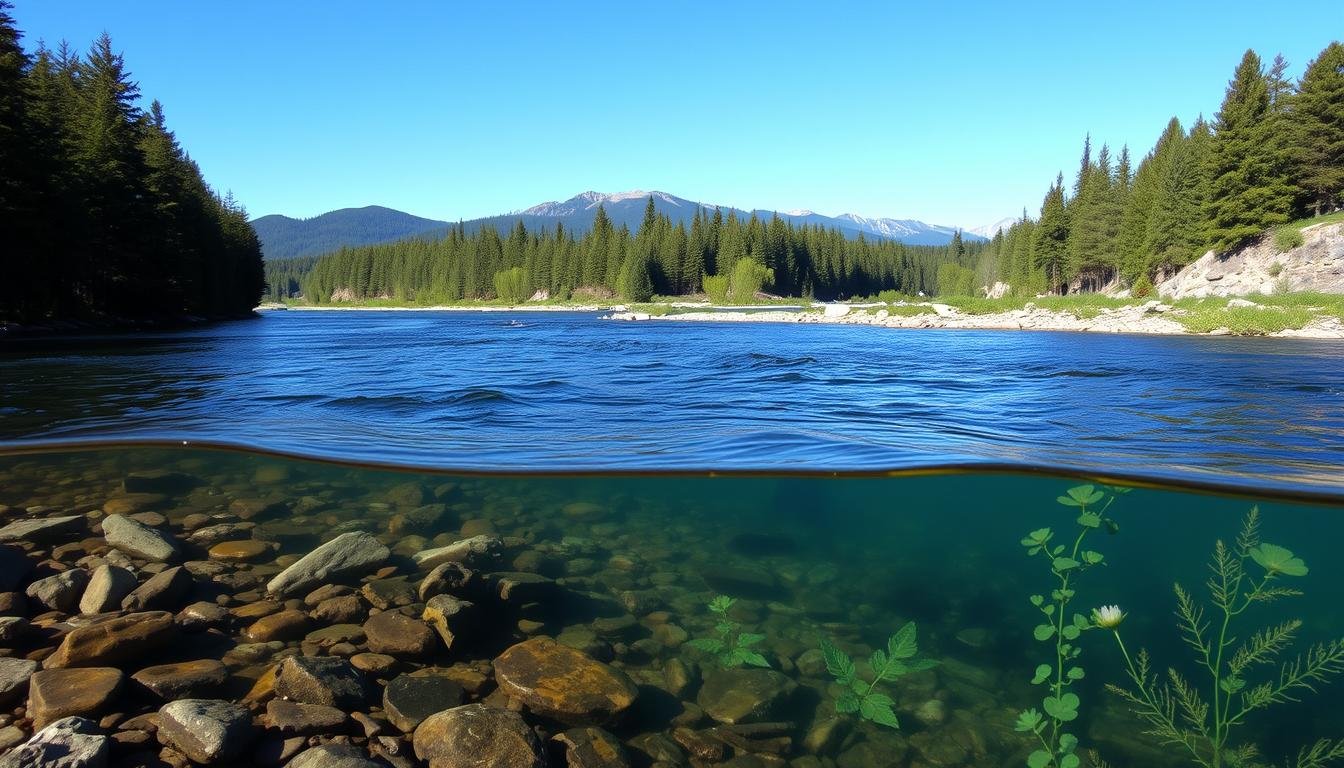
| Season | Conditions | Best Techniques |
|---|---|---|
| Spring (March-April) | 8-12 inches of visibility | Spawn bags, jigs with maggots, spinners |
| Fall (Mid-September to November) | Consistent fishing conditions | Jigging with maggots, spinners, flies |
| Winter (December-February) | Good to excellent visibility | Spawn bags, jigs with maggots, flies under a bobber |
By paying attention to these environmental factors, you can improve your steelhead fishing game.
Top Locations for Steelhead Jigging
Choosing the right spots can make your steelhead jigging better. The United States has many rivers and areas perfect for fishing. It’s important to know the local rules and how to protect the environment.
Best Rivers and Areas in the United States
Some rivers are known for their steelhead and easy access. Here are a few:
- Columbia River – A vast watershed known for strong steelhead runs.
- Rogue River – Offers stunning scenery and thriving steelhead populations.
- Great Lakes Tributaries – A network of rivers supporting diverse steelhead fishing.
These places are loved by anglers for their steelhead. Each river is unique, offering different experiences.
Local Regulations and Conservation Practices
Following fishing rules is key for steelhead jigging. Each state has its own rules for catching steelhead. Important conservation steps include:
- Respecting catch limits to ensure sustainable steelhead populations.
- Participating in local conservation programs.
- Using barbless hooks and handling fish gently to promote survival upon release.
By following these rules and practices, you help protect the steelhead. Your actions help the fish and future anglers. This way, steelhead rivers can thrive for years to come.
| State | Steelhead Smolts Stocked (2023-2024) |
|---|---|
| Ohio | 498,972 |
| Pennsylvania | 1,091,197 |
| New York | 194,569 |
Conclusion
Mastering steelhead jigging techniques is key to a better fishing experience. By using the tips from this article, you can catch more fish. Understanding steelhead behavior and choosing the right gear are crucial steps.
Remember, good fishing practices and conservation are just as important. Following local rules and protecting the environment helps keep fishing great for everyone. Whether you’re new or experienced, using expert tips will make your fishing trips more rewarding.
By applying what we’ve shared, you’ll be ready for steelhead fishing. The journey of learning and exploring makes every moment on the water special. It’s a path to success and a deeper love for fishing.

